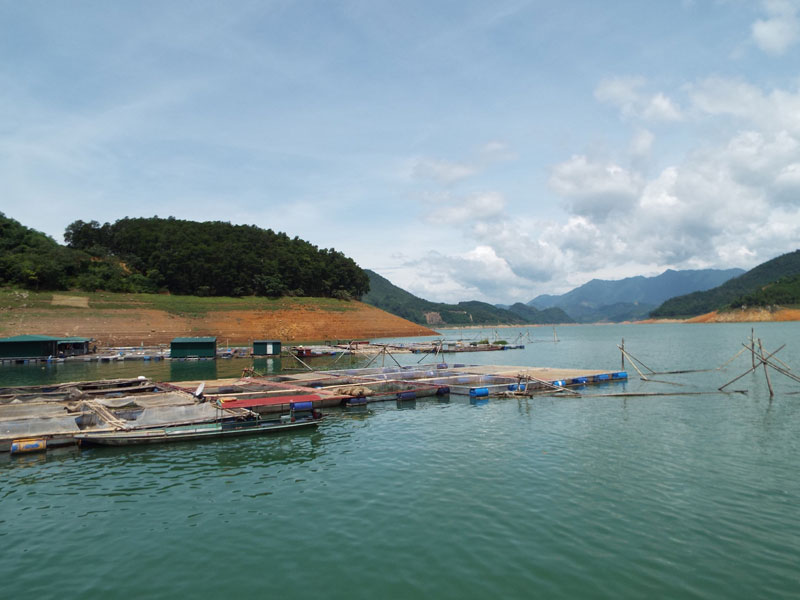



A view of Bich Tru village, Thai Thinh
commune (in Hoa Binh city) from Hoa Binh Lake
Bich Tru village is believed to be the
tourism gateway of Hoa Binh Lake. This village is close to the Hoa Binh
Hydropower Plant, especially about 3.5 km from the center of the commune by
road and only about ten minutes by waterway from Bich Ha port.
The village has dozens of Muong ethnic
households living. The cultural space and landscape are almost original, and
the majority is traditional stilt houses. The village is also located in gentle
slope and close to the blue riverbank. On the top of village, there are
majestic mountains in which it exists some primitive forests, many hills of
Aganonerion, forest tamarind trees and enchanted rose myrtle hills. Sitting in
any houses, people can see the whole view of the vast reservoir area and blue
sky as touching hand.
The local people mainly work in agriculture,
forestry, fruit trees, husbandry, aquaculture and fishing on the lake. In spite
of many difficulties, the people are very friendly and open. Bich Tru village
has a long time to be a point of discovery and enjoying for those who love
nature and seek out the relaxed feeling on the vast reservoir. Moreover, the
village is a place for many visitors who want to enjoy the food and ethnic
products such as Da river grilled fish, smoked ham, indigenous chicken with
lime leaves and chilies, and forest honey. Location of Bich Tru village is both
close to the city and connects to Ranh hamlet in order to go to Thang cave of
Hoa Binh commune, which are potential cultural and spiritual tourism areas.
The city authority is planning to protect the
landscape and environment, plan and construct infrastructures and views,
develop some traditional crafts based on available materials, apply science and
technology, develop cage fish farming as the value chain, organize gardening
and plant specialized fruits trees serving for homestay tourism. In the future,
the community tourism village - Bich Tru will connect all tourist sites in the
city and actualize the planning development of the Hoa Binh Lake National
Tourist Area.